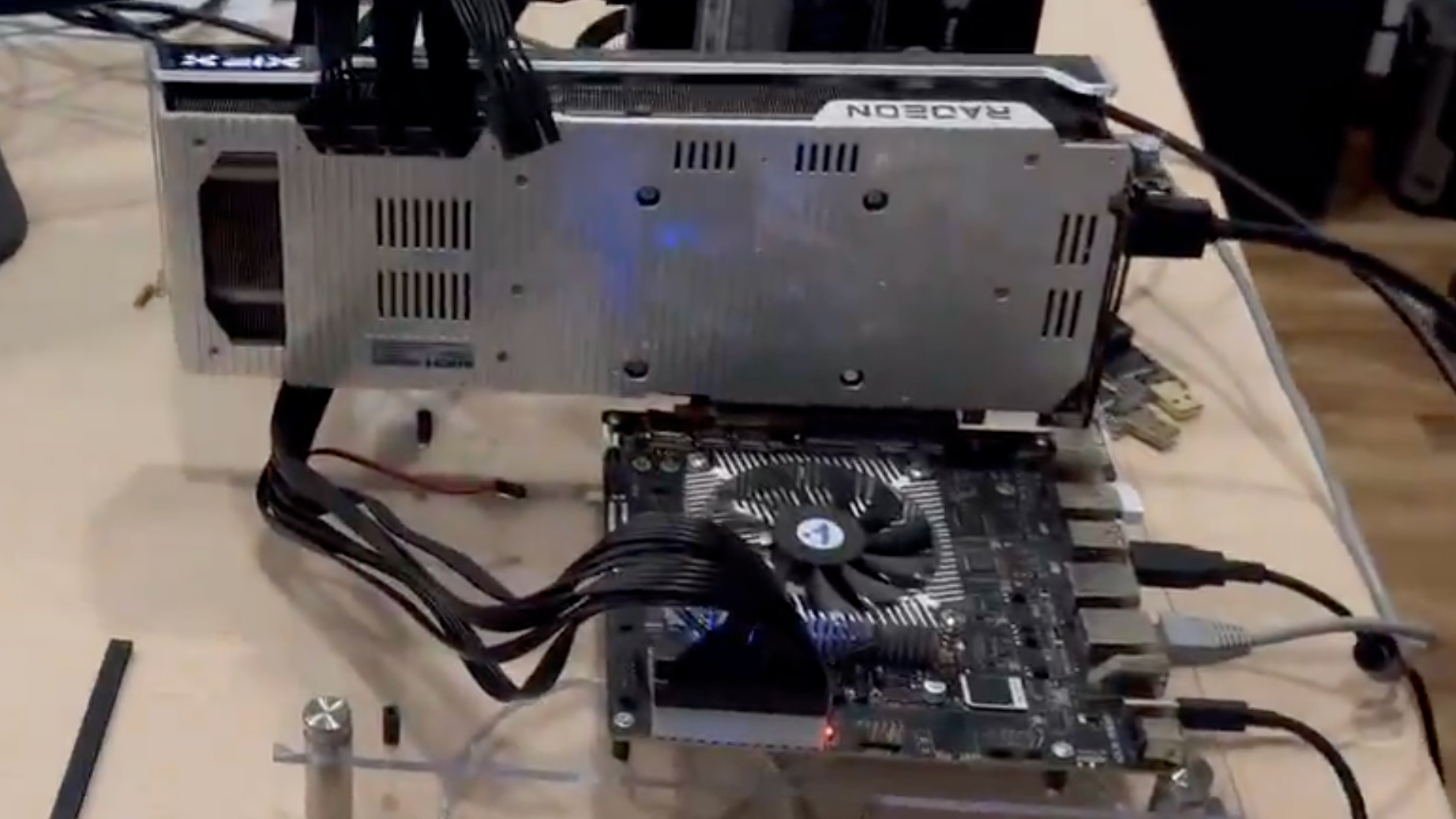
RISC-V firm Milk-V demonstrated that it can get AMD’s RX 7900 XTX graphics card to work on one of its RISC-V boards.
The PC shown in the video uses Milk-V’s Megrez board, which is equipped with Chinese RISC-V chip maker Eswin’s EIC7700X, a system-on-chip (SoC) that hosts four P550 CPU cores designed by SiFive. The P550 core has been around since 2021, so it’s nothing cutting-edge at the tail end of 2024. The SoC sport H.265 encoding and decoding at 8K, and has a 20 TOPS NPU, which are both reasonably robust for PCs.
The particular 7900 XTX that Milk-V used was made by XFX and ran on Debian Linux. There wasn’t much choice in terms of the OS, as Linux boasts the best support for RISC-V at the moment. The brief demo showed the system running the glmark2 benchmark, which renders 3D objects at the highest framerate possible.
However, Milk-V got a 7900 XTX up and running on this RISC-V board, which marks another milestone for RISC-V’s ambitions in PCs. So far, the open-standard architecture has been primarily used for data centers, AI, and tiny, low-function chips that form just one small part of a whole product. Although the usage of RISC-V has been growing steadily for the last few years, the architecture hasn’t penetrated the PC market, the domain of x86, and now Arm.
Milk-V Megrez running AMD 7900XTXQuad core SiFive P550, 19.95TOPS NPU#riscv #RISCVSummit pic.twitter.com/xSuTLjcIqOOctober 24, 2024
A few RISC-V laptops have made it to market, such as DeepComputing’s DC-ROMA and the Lichee Console 4A, but you could count them all on one or maybe two hands. No fully assembled RISC-V-powered desktop exists, but some motherboards come with RISC-V chips, such as those made by Milk-V.
Although no RISC-V CPU is in a position to realistically take advantage of support for AMD’s flagship gaming CPU, the support’s existence certainly won’t hurt. It will undoubtedly be difficult for RISC-V to make inroads into the PC ecosystem if Arm’s example is anything to judge by. Arm chip designer Qualcomm struggled for years to make its Snapdragon laptops an appealing choice until this year with the Snapdragon X Elite. Estimates show Arm CPUs will power as much as 40% of notebooks sold in 2029.
It is important to note that Arm has the full support of Microsoft, which is crucial for Arm’s success in PCs since Windows is the most important OS for consumer desktops and laptops. Getting supported on Windows will probably be essential for RISC-V’s adoption in the PC market. Otherwise, RISC-V companies will have to bet on Windows getting serious competition from Linux or some other OS, which doesn’t seem likely to happen any time soon.







